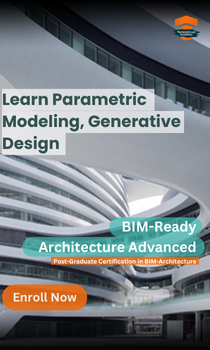Sustainable Architecture: Envisioning a Future Towards Eco-Friendly Buildings
Jan 22, 2025
Category: Others
Admin

Sustainability is a global buzzword that has infiltrated the construction industry. AEC professionals seek to combat climate change through sustainable architecture.
Hence, architects must create designs that ensure proper form and function while considering environmental factors. To comprehend this topic, let’s learn the meaning of this type of architecture, its characteristics, examples, and more.
What is Sustainable Architecture?
This architecture concept emphasizes designing and constructing structures that have minimal negative effects on human health and the environment. Eco-friendly designs encompass environmentally friendly materials and methods for lowering CO2 emissions.
People often confuse sustainable design with green architecture. However, green designs involve practices with a lower environmental impact. On the other hand, sustainable architecture aims to improve the occupants’ quality of life and economic sustainability.
Sustainable buildings have green spaces and ensure that the occupants get sufficient sunlight. This contributes to elevated mood, reduced stress, and higher productivity for the residents. Such structures are also more cost-effective, as they promote energy efficiency and durability.
Characteristics of Sustainable Architecture
Eco-Friendly and Regenerative Materials

Hands-on Material testing (photo credit: Natalia Kobylinska)
Environmental architecture utilizes eco-friendly and regenerative materials such as hemp, bamboo, soy, recycled and upcycled materials, and green insulation. They are also used in vernacular architecture.
In this type of design, architects use sustainable alternatives to conventional materials for architecture as well as home decor. For example, hempcrete instead of concrete and bioplastics made from algae.
Efficient Energy and Water Usage
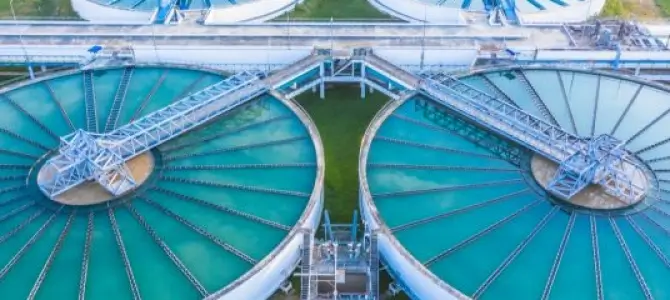
Sustainable design prioritizes higher efficiency in energy and water usage. Architects harness renewable energy sources such as solar panels, natural heating and cooling, hydraulic energy production, and ventilation systems to lower energy consumption.
They use this design to achieve a net zero effect by producing at least the same amount of energy that the building consumes. Implementing water conservation systems such as greywater recycling and rainwater collection are the major facets of this design.
Adaptive and Modular Spaces

Timayui kindergarten (photo credit: Jorge Gamboa)
Natural materials are used to create modular and adaptable spaces. They are easy to repurpose, break down, and recycle. Sustainable architecture accommodates them in micro-apartments, small houses, and other small structures, leading them to use less land mass and energy.
Today, people are using recycled shipping containers to build sustainable houses. Moreover, floating architecture on waterways is ideal for dense coastal areas.
Incorporation of Plants and Nature

(photo credit: Shutterstock)
Eco-friendly designs are characterized by natural elements such as plant-covered roofs, living walls, and tree-covered residential towers, etc. to create a healthy biophilic environment for the occupants.
Landscaping of this type of architecture is done using native plants. These plants require less maintenance, mitigate soil erosion, and promote local biodiversity due to having grown in the native environment.
Durability

The Stairs to Kriterion / MVRDV. (photo credit: Laurian Ghinitoiu)
Architects’ vision is to design and build durable structures leveraging eco-friendly design. Hence, it is worth investing in this type of architecture. High-quality construction, versatile design, and robust materials are vital to boost longevity and reduce the cost of a structure.
Easy repairs and maintenance extend a building’s life. The house constructed on an adaptable design can respond to the various needs of inhabitants ensuring substantial or costly alterations.
Affordability

ICON 3D Printed Homes, Austin, TX. (photo credit: Regan Morton Photography)
A person does not have to pay a hefty price for a sustainable house. The only investment is to buy technological items. Environmental architecture paves the way for building a house that is economical and energy-efficient to yield significant savings over time.
It is easy to maintain a house that has a passive design, an air-tight envelope, and is well-insulated. A smart floor plan is not heavy on material and construction. It makes up for the investment in various systems such as solar PV arrays, double glazing, and other durable materials. They need less repair and maintenance.
Wellbeing of Occupants
Sustainable architecture facilitates the buildings that nurture and support the mental and physical well-being of the residents. In this design concept, architects utilize intangible qualities such as natural light, ventilation, thermal comfort, outdoor views, good air quality, etc. to connect the inhabitants with nature.
It is a holistic approach that entails non-toxic materials, views of greenery, and landscaping. This type of architecture is complete in terms of aesthetics and function and promotes the well-being of humans.
Benefits of Sustainable Architecture
Lower Emissions
Sustainable buildings can positively affect the local, national, and global environment. Carbon dioxide supercharges the natural greenhouse effect after entering the atmosphere, which causes temperatures to rise. Incorporation of renewable energy sources and other systems in building design can reduce carbon emissions.
Thus, this problem can be curbed at source and lead the world to require less investment to mitigate climate change. Also, the occupants of a sustainable building will not be affected by emissions, which can lead to healthcare cost savings.
Better Productivity
It has been observed that people living in the natural light and elements of nature are less stressed and more productive. Being positive helps people live a long and cheerful life. People need it most in a world filled with technology.
Lower Building Costs
Though some costs may be higher, it costs less to construct and maintain a sustainable home. In sustainable architecture, professionals complete partial or full structures elsewhere, limiting resource usage on the site. Additionally, these structures offer higher value in the long term, unlike their traditional alternatives.
Better Health and Wellbeing
Sustainable building designs cater to humans’ need for a pollution-free space through proper ventilation and plantation across the house. Natural elements such as landscaping, greenery, and sunlight can lower anxiety and blood pressure issues among the occupants. They can also help release muscle tension and tolerate pain.
Furthermore, wood and stone can reduce the impact of various mental issues such as depression and post-traumatic stress disorder.
Top Examples of Sustainable Architecture
One Central Park
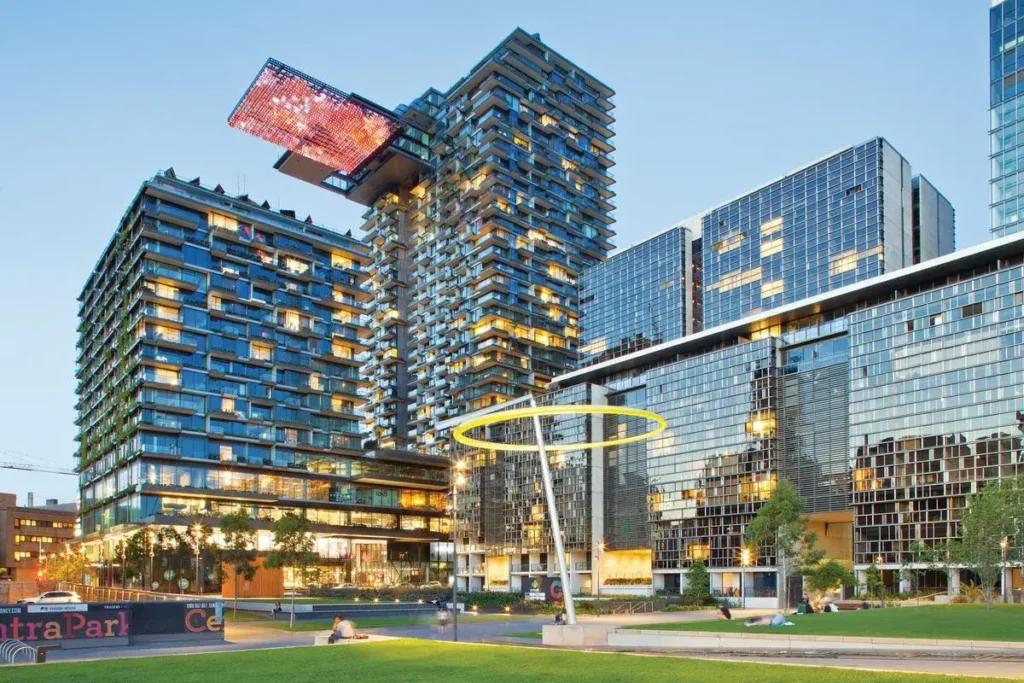
Architect: Ateliers Jean Nouvel
Location: Chippendale, Australia
Completed: 2014
Building Typology: Apartments and Retail
The two towers for block 2 of the Frasers Broadway project were designed by the eminent architect Jean Nouvel. This building has 34 stories with 12 stories of serviced apartments that include a retail podium. It is the epitome of sustainable architecture aiming to facilitate harmony between the urban environment and nature.
These towers won the ‘Best Tall Building Worldwide’ award in 2014. Jean Nouvel collaborated with renowned botanist Patrick Blanc to design these lush green towers. 50% of the building’s facade and landscape is studded with a vertical garden. Greenery covering the building contributes to saving energy used for interior cooling.
Vertical Forest – Bosco Verticale
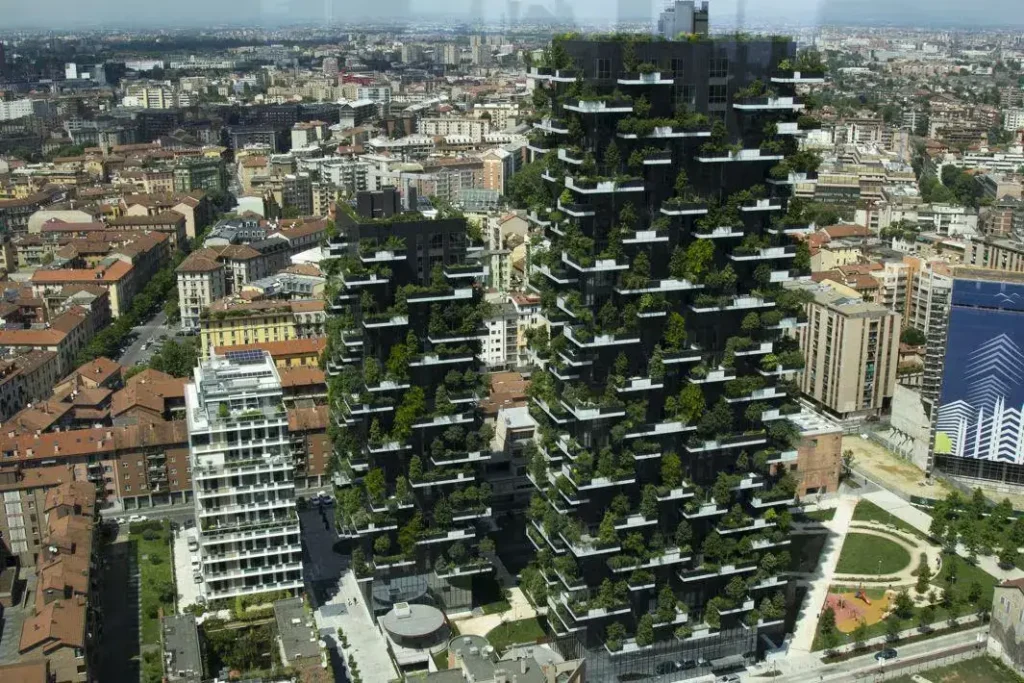
Architect: Stefano Boeri Architetti
Location: Milan, Italy
Completed: 2014
Building Typology: Residential
Bosco Verticale houses numerous vegetation and is the creation of Stefano Boeri Architetti. Architects have made a successful attempt to obtain sustainability by designing these two towers. These towers absorb CO2 and purify the environment to pave the way for a microclimate in the urban area. This vertical sustainable structure entails 11,000 perennial plants, 5,000 shrubs, 480 medium to large trees, and 300 small trees.
The architect has created an optimum microclimate, filtered sunlight, and reduced technological and mechanical device usage through a vegetation screen. It has resulted in a structure that promises sustainability and limits the usage of contemporary stuff.
Gardens by the Bay
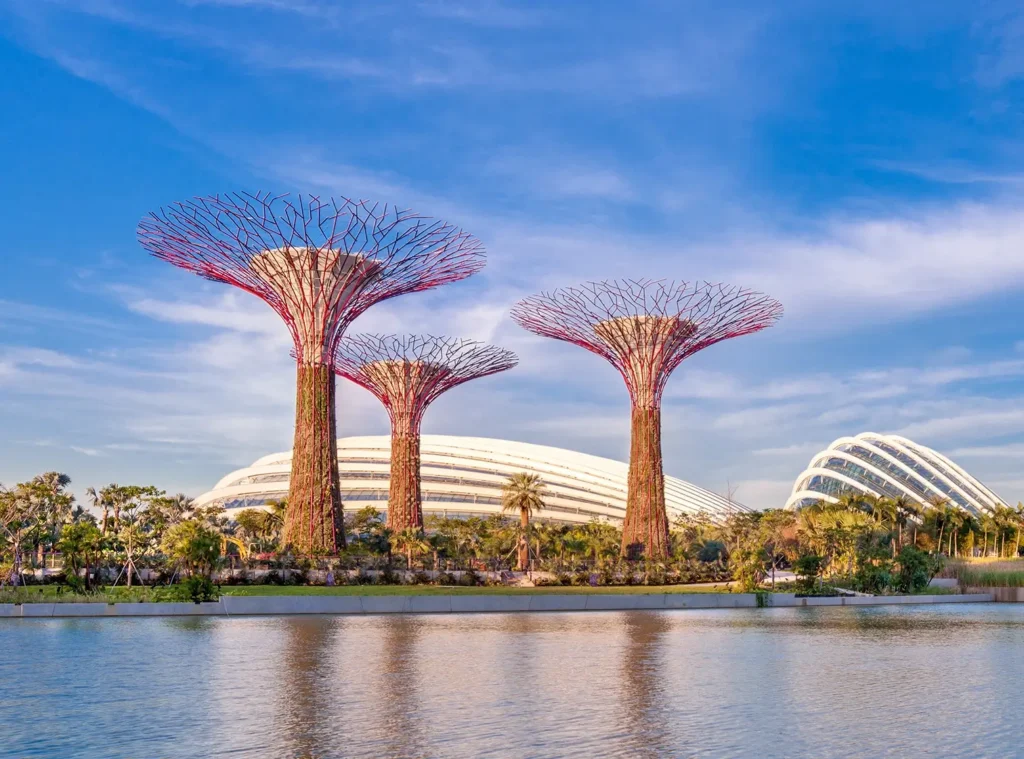
Architect: Grant Associates + Gardens by the Bay
Location: Singapore
Completed: 2012
Building Typology: Public Park
Gardens by the Bay has earned recognition as the largest and a well-known sustainable project across the globe. This international tourist attraction is full of greenery in the city which gained the reputation as a garden city. It is a brilliance of the Garden by the Bay team working with Grant Associates.
This nature park spanning around 101 hectares is home to three different gardens comprising flora and vegetation. CO2 generated in the region is controlled by the greenery of this park. Moreover, professionals have implemented an innovative sustainable element, Supertrees in this garden. These trees aid in rainwater collection and generate solar power.
ACROS Fukuoka Prefectural International Hall
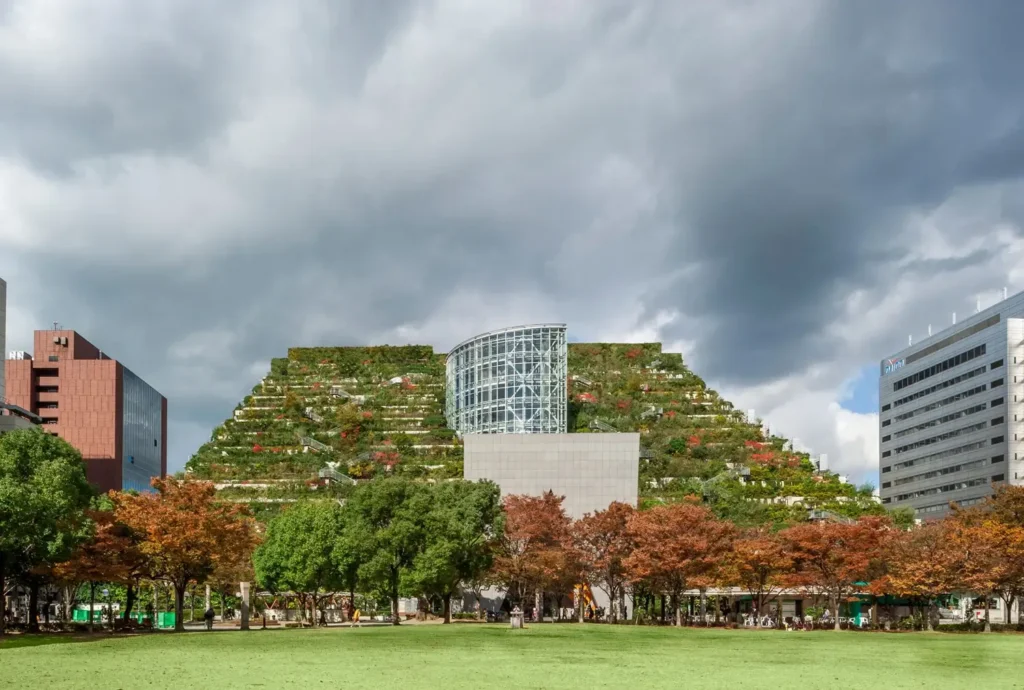
Architect: Emilio Ambasz
Location: Fukuoka City, Japan
Completed: 1995
Building Typology: Mixed-use
It is a prime example of sustainable architecture. Architect Emilio Ambasz’s design intervention has played a significant role in minimizing Fukuoka’s lack of greenery. This commercial building’s facade has 15 vertical gardens. The aim of this greenery goes beyond aesthetics as the natural habitat thrives on it and it regulates internal temperatures. Reduced CO2 emission and heat island aids in regulating the thermal environment.
Indoors of the structure contain gardens for relaxation, meditation, and escape from the city on each terrace floor. Fukuoka Bay offers a mesmerizing view of the city from the terrace. A 120 varieties of 50,000 plants, which are home to birds and other animals.
The Cube

Architect: 3XN
Location: Berlin, Germany
Completed: 2020
Building Typology: Office Building
The Cube, situated in the heart of Berlin is an ideal example of environmental design. The architect designed this structure prioritizing sustainability in the working spaces. The fabulous design of this structure allows uninterrupted natural lighting, leading to optimal energy utilization and indoor climate.
This leading-edge building is integrated with smart digital user interfaces. Individuals working in the building are encouraged to bring their own devices to promote sustainable behavior. It facilitates lowering unnecessary operational costs, energy efficiency, and maintenance irregularities.
| Also Read: BIM and Sustainability: Optimising Green Building Practices
Final Thoughts
Sustainable architecture is the way forward for the world struggling with environmental crises. Integrating this approach into construction design can balance social well-being and environmental viability.
Incorporating cutting-edge design, circular materials, and energy-efficient systems into buildings can lower operational and embodied carbons. It can open the doors for a greener future.






